In This Issue
-
Flanigan’s Eco-Logic: The EV World
- Electric Pick-Up Trucks Ready for Blast Off!
- Mash-Up: Spent Blades / Gravitational Storage
- Extended Producer Responsibility
- Decarbonizing Europe Fast
- GM Greening Suppliers & Customers
- Corporate PPAs and Hourly Load-Matching Strategies
- Microgrids 1.8: Let’s Discuss Generators
- Recent Episodes of The NetPositive Podcast

Flanigan’s Eco-Logic: The EV World
The EV world is rich in developments: There’s a cacophony of new EVs on the market, from cars, to trucks, buses, trains, planes, and ships. EVAdoption reports that there are currently 56 plug-in electric and battery-electric vehicles available in the United States. PlugStar by Plug-in America shows 28 all-electric models available in the LA market.
The action is broad and in line with a global movement to decarbonize. EVs powered by renewables make decarbonizing transport possible. Policies are catalyzing markets which are going berserk! There are lots of new market entrants; car and now pick-up providers with names we’ve never heard before: Rivian, Lordstown Motors, Atlis, Hercules, Canoo, Flicker, and Alpha Wolf.
Just this morning came the news that the German government will increase the value of its incentives and extend its incentives for EVs for another four years, until 2025. Good news. The incentives are now worth ~$10,000 for a Model 3 Tesla, with a third paid by the automotive industry as previously negotiated. The announcement boosted stock prices for EV manufacturers including Tesla and Volkswagen.
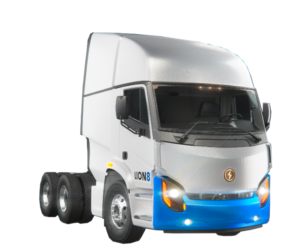 EVs come in all shapes and sizes. I am so impressed by the Lion all-electric Class 8 trucks! Lion also makes school buses. Much smaller, the MEV is a 100% electric compact urban commuter from Europe. It can be configured either as a cargo box van or pick-up. It accesses small parking spaces and comes in six standard colors. MEV, a leader in golf carts since 2005, has hit the streets of London with its basic, 100-mile range EVs.
EVs come in all shapes and sizes. I am so impressed by the Lion all-electric Class 8 trucks! Lion also makes school buses. Much smaller, the MEV is a 100% electric compact urban commuter from Europe. It can be configured either as a cargo box van or pick-up. It accesses small parking spaces and comes in six standard colors. MEV, a leader in golf carts since 2005, has hit the streets of London with its basic, 100-mile range EVs.
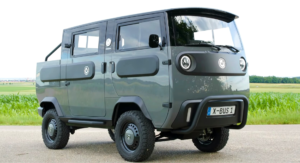 In Germany, Electric Brands is showing off its Xbus, what one enthusiastic critic called “absolutely adorable.” By legal definition in Europe, the Xbus is not an automobile, but instead it’s in the L7e class of heavy quadricycles. That’s a new compact class endorsed by local authorities in Europe for their environmental benefits and use in rural and urban areas. Xbus has a top speed of 62 miles per hour and a 10 kWh battery which gives it a range of 124 miles. The Xbus has drawers for swapping out batteries to quickly recharge.
In Germany, Electric Brands is showing off its Xbus, what one enthusiastic critic called “absolutely adorable.” By legal definition in Europe, the Xbus is not an automobile, but instead it’s in the L7e class of heavy quadricycles. That’s a new compact class endorsed by local authorities in Europe for their environmental benefits and use in rural and urban areas. Xbus has a top speed of 62 miles per hour and a 10 kWh battery which gives it a range of 124 miles. The Xbus has drawers for swapping out batteries to quickly recharge.
Move over Tesla! Porsche, Ferrari, and others are moving into the EV space: Porsche with market domination, Ferrari with high performance electric in the forefront. Barron’s reports that Ferrari’s stock has surged forward– that it is spending aggressively on 21st century EV technology. (Ferrari is also reportedly “accepting the inevitable,” making a Ferrari SUV. Porsche, Lamborghini, Maserati, Aston Martin, Rolls Royce, and Bentley all already make these SUVs. Someday they will be all-electric!)
Porsche Automobile Holding is a holding company that consists mainly of its controlling interest in Volkswagen (VW), which has divisions including Porsche and Audi. Porsche also owns luxury names including Bentley, Lamborghini, and Bugatti. Porsche also has the goal of being the #1 EV leader in the world by 2025, surpassing Tesla.
Recently, VW introduced the IE.4 SUV, its first EV designed from the ground up. It is designed to compete with the Chevy Bolt and the Ford Mustang Mach E EV, both in the $40,000 price range. All of three undercut the $50,000 price tag for the Tesla Model Y. At the other end of the spectrum, Porsche’s Taycan EV can be configured either as a sedan or SUV, and is priced at $80 – 190,000.


 The State of Maine became the first state in the nation to require companies that create consumer packaging to pay for the costs of recycling it. Governor Janet Mills signed a bill on July 13th that establishes the “Extended Producer Responsibility (EPR)” program. The legislation will charge large packing producers for collecting and recycling cardboard boxes, plastic containers, and other packaging materials, plus the disposal of non-recyclable materials. Income generated will support local recycling efforts that heretofore have had to rely on taxpayer dollars to fund their operations.
The State of Maine became the first state in the nation to require companies that create consumer packaging to pay for the costs of recycling it. Governor Janet Mills signed a bill on July 13th that establishes the “Extended Producer Responsibility (EPR)” program. The legislation will charge large packing producers for collecting and recycling cardboard boxes, plastic containers, and other packaging materials, plus the disposal of non-recyclable materials. Income generated will support local recycling efforts that heretofore have had to rely on taxpayer dollars to fund their operations. The European Union is pushing hard on climate protection. This week’s drastic flooding made the urgency clear. The EU’s European Green Deal was approved in 2019 and calls for Europe to be carbon neutral by 2050. It recently released the “impact assessment plan” for its branded “Fit for 55” initiative. Fit for 55 presents a roadmap for achieving an even steeper 2030 emissions reduction target, up from 50% to 55% from 1990 levels. That’s less than the recently announced United Kingdom target of 68%, but more rigorous than the United States target of 40 – 43%.
The European Union is pushing hard on climate protection. This week’s drastic flooding made the urgency clear. The EU’s European Green Deal was approved in 2019 and calls for Europe to be carbon neutral by 2050. It recently released the “impact assessment plan” for its branded “Fit for 55” initiative. Fit for 55 presents a roadmap for achieving an even steeper 2030 emissions reduction target, up from 50% to 55% from 1990 levels. That’s less than the recently announced United Kingdom target of 68%, but more rigorous than the United States target of 40 – 43%.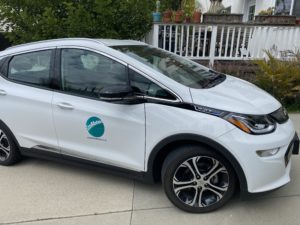 General Motors has a commitment to be carbon neutral by 2040. The commitment is even broader than transitioning its products to be electric vehicles. It’s also about greening its operations and its supply chain, those industries that make its parts.
General Motors has a commitment to be carbon neutral by 2040. The commitment is even broader than transitioning its products to be electric vehicles. It’s also about greening its operations and its supply chain, those industries that make its parts.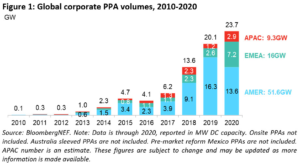
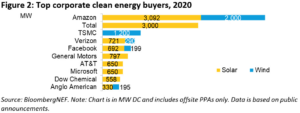
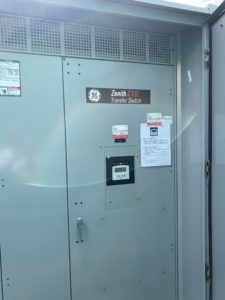
 Convo: Peter Asmus on Microgrids and the Changing Utility Landscape:
Convo: Peter Asmus on Microgrids and the Changing Utility Landscape: